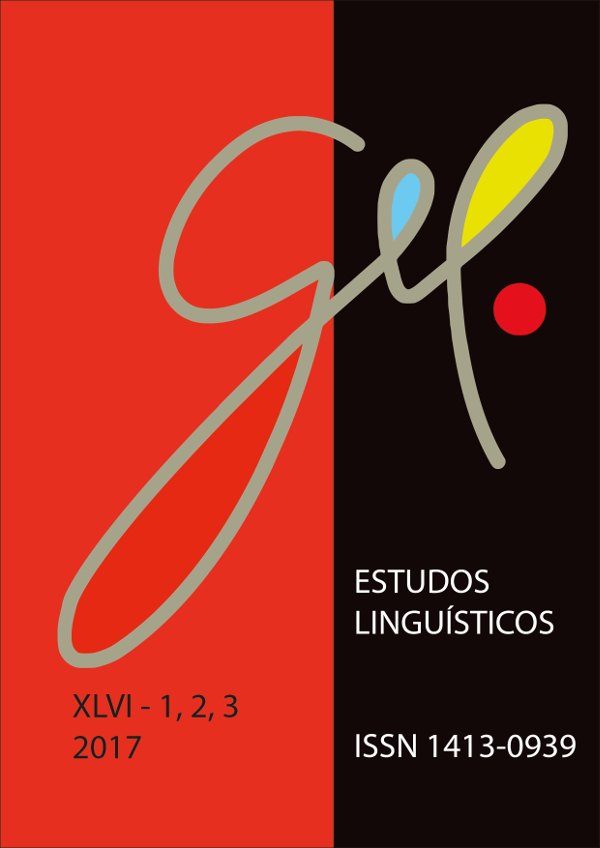Charge e enunciados-respostas: a contrapalavra rompendo e construindo sentidos
DOI :
https://doi.org/10.21165/el.v46i3.1532Mots-clés :
charge, dialogismo, ato ético, sentidos, discursoRésumé
Encontrada na mídia, geralmente em jornais e redes sociais, a charge é um gênero que promove um complexo diálogo com os aspectos presentes na sociedade de forma bastante política, irônica e crítica. Tais elementos contribuem para que a charge seja um relevante objeto de análise para os estudos dialógicos discursivos, em especial, para compreender como os sentidos são construídos no discurso. Este trabalho, sinalizando tal rica configuração e tendo como base teórica os escritos de Bakthin e o Círculo, visa responder aos seguintes questionamentos: como ocorre a construção dialógica de sentidos considerando a produção e recepção dos discursos, em charges com alta repercussão (proporcionaram número alto de comentários e manifestações de leitores)? Como diferentes vozes sociais se engendram e refletem sentidos no discurso? A fim de dar resposta a estes questionamentos, foi selecionado como corpus para a presente discussão uma charge do cartunista João Montanaro do jornal Folha de São Paulo e também foram selecionados dois comentários de leitores sobre a referida charge dispostos na página do cartunista na rede social Facebook. Os conceitos sobre dialogismo e construção de sentidos estão presentes em todo trabalho, além das contribuições filosóficas sobre a concepção de atos éticos responsáveis e responsivos, os estudos sobre a concepção do enunciado como unidade da comunicação discursiva e algumas reflexões sobre os elementos que compõem o gênero charge. A partir das análises realizadas é percebível a diversidade de sentidos construídos (as rupturas e os elos constituídos) dentro da cadeia comunicativa discursiva a partir dos diferentes aspectos valorados pelos leitores em relação ao teor crítico da charge.
Téléchargements
Références
ANDRADE, A. C. de. A charge: análise do processo enunciativo-discursivo numa perspectiva dialógica. 2014. 329 f. Tese (Doutorado em Letras) – Programa de Pós-graduação em Letras, Universidade Federal de Pernambuco, Recife, 2014.
BAKHTIN, M. Apontamentos de 1970-1971. In:____. Estética da Criação Verbal (1979). Tradução de Paulo Bezerra. 6. ed. São Paulo: Martins Fontes, 2011.
________. Gêneros do Discurso (1952-1953). In:_______. Estética da Criação Verbal. Tradução de Paulo Bezerra. 6. ed. São Paulo: Martins Fontes, 2011 [1979].
_______. Para uma filosofia do ato responsável (1920-1924). Tradução de Valdemir Miotello e Carlos Alberto Faraco. São Carlos: Pedro e João Editores, 2010.
BAKHTIN, M./VOLOCHÍNOV, V. N. Marxismo e filosofia da linguagem. Tradução de Michel Laud e Yara Frateschi. São Paulo: Hucitec, 2009.
BRAIT, B.; MELO R. Enunciado/enunciado concreto/enunciação. In: BRAIT, B. (Org.). Bakhtin: conceitos-chave. São Paulo: Contexto, 2007. p. 61-78.
CÂMARA JR, J. Mattoso. História da Linguística. 7. ed. Petrópolis: Vozes, 2011.
ROMUALDO, E. Charge jornalística: intertextualidade e polifonia – Um estudo de charges da Folha de S. Paulo. Maringá: Eduem, 2000.



